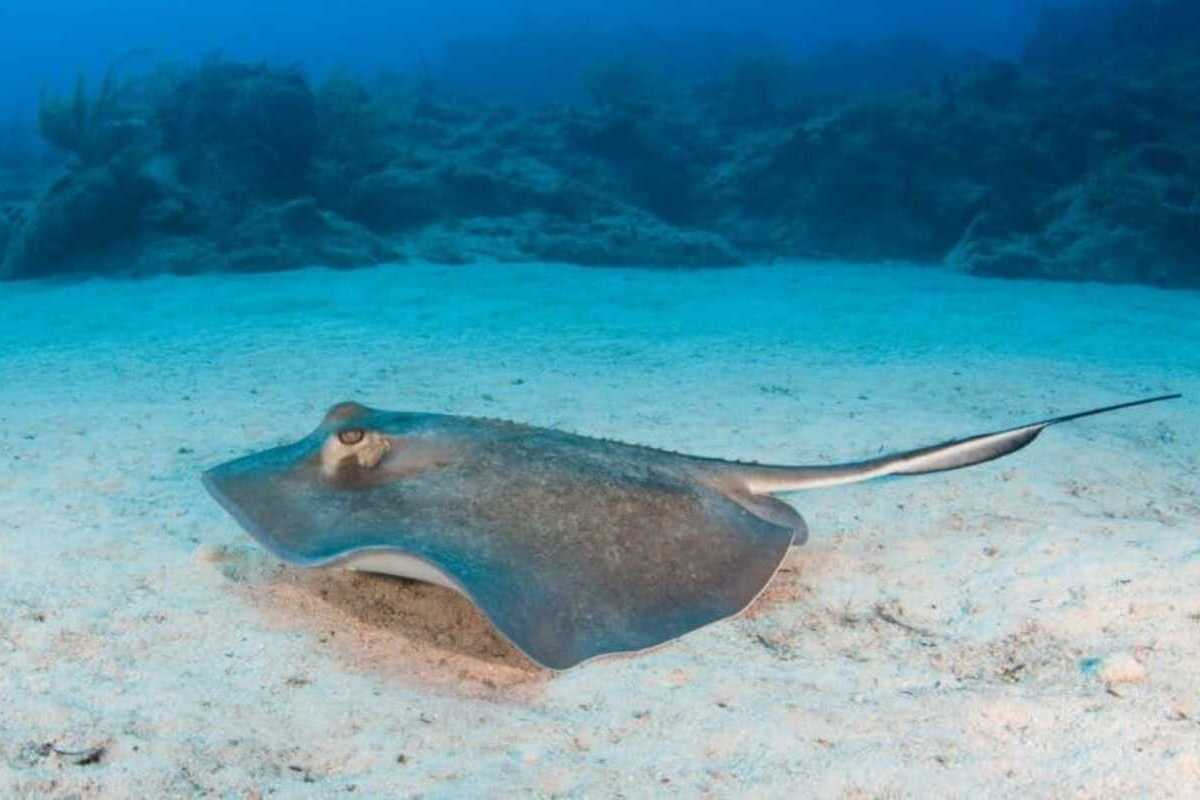Sea skates are among the most mysterious inhabitants of the ocean. Their unusual body shape, graceful movements in the water and diversity of species have long attracted the attention of researchers and divers. They are close relatives of sharks but differ greatly in lifestyle and behavior. Sea skates live in warm seas and oceans, and some species can even be found in freshwater rivers. Now you will discover interesting facts, incredible facts and fascinating facts about skates that you may not have known.
- Skates belong to the class of cartilaginous fish. Their skeleton is made not of bone but of flexible cartilage. This makes the body lighter and allows them to move through the water with great elegance.
- The most famous representatives are mantas. They can reach up to 7 meters in width and weigh more than 1.5 tons. Despite their enormous size, mantas feed on plankton and are completely harmless to humans.
- Unlike sharks, most skates have their mouths located on the underside of the body. This makes it easy for them to feed on the sea floor. They eat mollusks, small fish and invertebrates.
- Some species of skates are capable of producing electric discharges. For example, electric rays use this ability for defense and to stun their prey. The discharge can reach several hundred volts.
- Skates have highly developed sensory organs. They can detect the slightest vibrations in the water as well as electric signals from the muscles of other animals. This ability helps them hunt in low-visibility conditions.
- Skates move through the water by undulating their wide pectoral fins. These fins resemble wings, which is why their swimming is often compared to the flight of a bird. This mode of movement allows them to save energy.
- Many skates species have long tails. In some, the tail is armed with a venomous spine capable of inflicting serious injury. This defense mechanism makes skates an unattractive target for predators.
- Skates are known to leap out of the water. This is most often observed in mantas, which can perform acrobatic jumps several meters high. Scientists believe this may be a form of communication or a way to remove parasites.
- Skates breathe using gill slits located on the underside of the body. They also have special openings above their eyes that allow them to draw in water while resting on the seabed. This prevents sand from being sucked into their gills.
- The teeth of skates vary depending on the species. Some have flat teeth for crushing shells, while others have sharp teeth for grasping fish. This diversity allows them to occupy different ecological niches.
- Many skates are nocturnal. During the day they rest on the seabed and at night they go hunting. This helps them avoid unnecessary attention from predators.
- Mantas are distinguished by a remarkable level of intelligence among fish. They can recognize themselves in a mirror, which indicates a high level of self-awareness. This ability is shared by only a few animal species.
- Skates reproduce in different ways depending on the species. Some lay eggs in strong capsules known as mermaid’s purses. Others give birth to live young that are able to swim on their own immediately.
- Some freshwater skates live in the rivers of South America. They have adapted to freshwater environments and often have striking patterns on their bodies. These species are highly valued by aquarium enthusiasts.
- Skates can be found in nearly all seas and oceans of the world. They prefer warm waters, but some species live in temperate zones. Their presence is an important part of marine ecosystems.
- Humans often pose a threat to skates. They get caught in fishing nets or are targeted in commercial fishing. This leads to a decline in the populations of many species.
- Skates display an incredible variety of colors and patterns. Some species have spots or stripes that help them camouflage on the seabed. Others, such as mantas, have distinctive black and white markings that can be used to identify individuals.
- Skates generally have a very calm temperament. Most of them are non-aggressive and avoid contact with humans. Even skates with venomous spines use them only in self-defense.
- In the culture of different peoples, skates have held symbolic significance. They were depicted in Polynesian art as symbols of strength and endurance. Their images are also found in the mythology of seafaring nations.
Sea skates are extraordinary creatures that combine grace, strength and diversity. Their world is full of mysteries and astonishing discoveries that still await researchers. Such interesting facts, incredible facts and fascinating facts allow us to see these animals from a new perspective. You may not have known many of them, but now skates have revealed some of their secrets to you.





